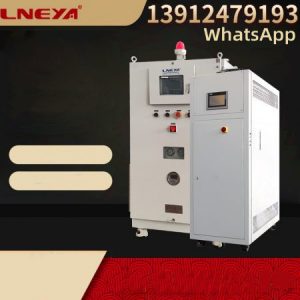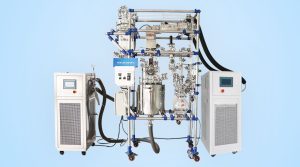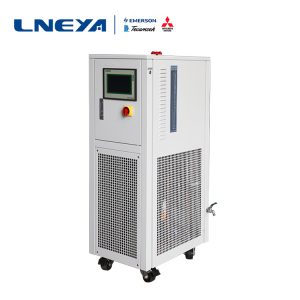Wie wird das Reaktortemperaturkontrollsystem installiert und verwendet?
Many users are going to start the installation after purchasing the reactor temperature control system. What should be paid attention to during installation?
When installing the reaction kettle of the reactor temperature control system, it is necessary to pay attention to whether the reactor is damaged during transportation and installation. The magnetic stirrer on the upper part of the kettle lid should be avoided, and the reaction of the reactor temperature control system should be avoided. The kettle operating room requires good ventilation and meets explosion protection requirements. The reaction kettle equipped with the reactor temperature control system was mounted on a support, and balanced on the four supports to keep the equipment perpendicular to the ground. Anti-static grounding devices should be installed on the flammable and explosive equipment of the reaction medium to eliminate static electricity.
If it is a high-temperature, high-speed magnetic stirrer, the reaction kettle equipped with the reactor temperature control system should be filled with lubricating oil at the bearing oil filling port before use. In the future use, the lubricating oil should be added regularly from the oil filling hole. The reactor equipment for the reactor temperature control system is supplied with cooling water in the outer water jacket of the magnetic stirrer before starting. The lower end is the water inlet and the upper end is the water outlet. A separate cooling water system should be used. The cooling water is not allowed. The cooling coil is then passed through the cooling coil in the kettle to enter the cooling water jacket of the magnetic stirrer.
The control cabinet and frequency converter of the reactor temperature control system equipment should be placed in a separate, electrically controlled workshop with dry and well ventilated. When the stirring speed of the reactor temperature control system equipment is greater than 80r/min, the motor cannot be started directly at the working speed, and the stirring speed should be slowly increased by the inverter. Otherwise, the stirrer resistance is too large, causing the magnetic stirrer to overload and causing the agitation to damage or burn the motor. The reaction kettle of the reactor temperature control system needs to be tested for tightness according to the working pressure. It is kept under inert gas for 15~30 minutes to check whether the whole equipment is leaking. If there is no leakage, it can be put into production.
When using the reactor temperature control system, it is necessary to pay attention to the switch is not suitable too much, so as not to damage the overall performance of the reactor temperature control system and the life of the fitting.
Verwandte Empfehlungen
-
Cooling method for semiconductor testing chiller to meet temperature control requirements
2015The biopharmaceutical field requires high-precision temperature to control the activity of enzymes and the production of products; the chemical industry field requires specific temperatures to stabilize chemical reactions; the electronic manufact...
Details anzeigen -
Refrigeration and heating temperature control system for multiple reactors
15021. There are some differences in the quality and configuration of the refrigeration and heating temperature control systems of multiple reactors from different manufacturers. Some equipment will have some noise during operation, and the noise is l...
Details anzeigen -
200L Kristallisationsauflösungs-Kessel Kühl- und Heizsystem
1367Für die Bedürfnisse der 200L Kristallisation Auflösung Kessel Kühlung und Heizung System-Anwendungen, diese Art von Ausrüstung ist in der Regel in der Kristallisation, Auflösung und andere Prozesse in den Bereichen der chemischen Industrie, Pharmazie...
Details anzeigen -
Reparaturverfahren für Kompressoren von Maschinen mit geschlossenem Warm- und Kaltzyklus
1454LNEYAs geschlossene Heiß- und Kaltkreislauf-Maschine verwendet die selbstkaskadierende Einzelmaschinen-Kältetechnik, und ihr Kompressor verwendet auch den Markenkompressor, der in der Leistung stabiler ist. Daher ist es einfach, eine Reihe von Kompressoren zu wählen...
Details anzeigen
 LNEYA Industriekühler Hersteller Lieferant
LNEYA Industriekühler Hersteller Lieferant














